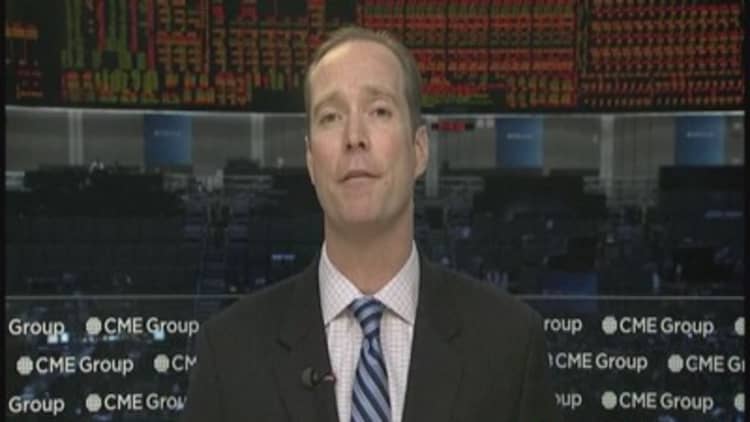
After the October dip, stocks may be getting ready to rip.
The is staging a bit of a recovery after last week's plunge.
Instead of that swift decline being a reason for concern, a historical analysis of similar situations suggests that the next few months could be sweet indeed for the market. In short, not even October jitters are enough to prevent the historically strong months of November and December from turning positive performances.
In 11 past years, the S&P has hit a 12-month high in September before correcting at least 5 percent from that high at some point in October, according to Jason Goepfert of SentimenTrader. Goepfert went on to find that in the Novembers that followed, the S&P had a positive month in eight of 11 times. Even more impressive, the market was positive through December in 10 of 11 years, gaining at least 3 percent in each year besides the infamous 1929. (Historical data from the earlier 90-stock S&P index can be used to extrapolate S&P performance dating back before the creation of the S&P 500 in 1957.)
| S&P 500 PERFORMANCE | November | November-December |
|---|---|---|
| 1929 | -13.40% | -11.20% |
| 1935 | 3.90% | 7.80% |
| 1955 | 7.50% | 7.40% |
| 1967 | 0.80% | 3.40% |
| 1976 | -0.80% | 4.40% |
| 1978 | 1.70% | 3.20% |
| 1979 | 4.30% | 6.00% |
| 1980 | 10.20% | 6.50% |
| 1989 | 1.70% | 3.80% |
| 1991 | -4.40% | 6.30% |
| 1992 | 3.00% | 4.10% |
| SOURCE: SENTIMENTRADER |
What's interesting is that weak Octobers generally have not been good omens for the market throughout history. In an email to CNBC, Goepfert noted that "historically it was better for November/December if October was calm and positive than if it was volatile and negative."
However, the story is different in bull markets. For that reason, "the fact that stocks were recently at a 12-month high helps alleviate some of the negativity surrounding volatile Octobers," Goepfert said.
On the whole, November and December tend to be rather strong months for stocks, with November ranking as the third-best S&P month since 1950, and December ranking as the best, according to the Stock Trader's Almanac. In 2013, the S&P gained 5.2 percent between Halloween and New Year's Eve.
One explanation for the seasonal strength, at least in recent years, may be the heavy level of stock buybacks in the festive months. In a recent note, Goldman Sachs points out that since 2007, 25 percent of S&P buybacks has occurred in November and December. It is this buyback surge that will help send the S&P sailing up to 2,050 by year-end, Goldman's strategists conclude.
Still, not everyone is willing to hop aboard the bull train.
"I don't want to be the Grinch that stole Christmas, but we're looking at things in a little different lens here in Chicago from the floor," said Jeff Kilburg of KKM Financial. "We did see the S&P e-mini futures contract recover, but the VIX—another barometer that we like to look at—has not gone below 17. Seventeen for quite some time was that ceiling, and now it's acting as a floor."
Jitters aside, earnings may take their rightful place in trading
Since the VIX (CBOE Volatility Index) measures how much traders expect the S&P 500 to move, its continued high level indicates to Kilburg that the markets are still finding much to fear, particularly with "continued headwinds coming out of Europe."
"Trust the statistics or trust a floor trader—it's your call," Kilburg concludes.



